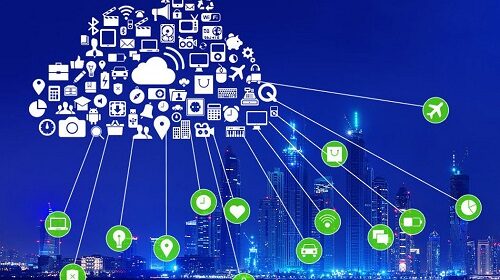Growing Demand for Chemicals Across the Globe is Expected to Boost the Demand for Marine Internet of Things Market During the Forecast Period 2027
Market Forecast
The marine internet of things market is projected to register a CAGR of 6.2% from 2020 to 2027. The growth in the seaborne trade and maritime tourism industry across the globe is driving the growth of the market. Furthermore, the increasing defense expenditure is fueling the growth of the market. However, the IoT solution’s vulnerability to cyber attacks and the high initial investment required for IoT are expected to hinder the global market growth to a certain extent.
Maritime transport is considered to be the backbone of global trade and economy; shipping carried more than 80% of the world’s goods, by volume, in 2019. According to the International Chamber of Shipping, seaborne trade continues to expand, bringing benefits to consumers across the world through competitive freight costs. During the forecast period, the growth in seaborne trade is expected to be evident in developing countries, offering job and business opportunities. The rise in international seaborne trade is driving the demand for IoT on board vessels. Onboard broadband also increases boosted the growth of the marine internet of things market.
Likewise, as per the Stockholm International Peace Research Institute (SIPRI), global military spending rose by 3.6% to approximately USD 1.91 trillion from 2018 to 2019. During the same period, the US, China, and India increased their military spending by 5.3%, 5.1%, and 6.8%, respectively. Furthermore, in 2019, India overtook Saudi Arabia and Russia to become the third-largest defense spender in the world.
Although there was a slight decline in the US defense spending from 2010–2019, the US observed growth in military spending in 2019. It is estimated that the US will spend significantly more on its military for the next two years, focusing on the modernization of conventional technologies. Meanwhile, other developing countries have plans to invest in advanced technologies and are focused on expanding, modernizing, and enhancing the capabilities of their armed forces and naval forces. This is also expected to drive the growth of the marine internet of things market during the forecast period.
Market USP
Increasing demand for improving the efficiency of vessels requires advanced IoT devices.
Segmental Analysis
By Component
The Network Connectivity Segment Expected to Register High Growth:The network connectivity segment accounted for the largest market share in 2019 andis expected to exhibit a high CAGR during the review period. Network connectivity is a must for IoT. Currently increasing adoption of satellite connectivity solutions by the marine vessel operators is driving the growth of this segment.
The IoT Platforms Segment is Likelyto Grow at the Highest Rate: The IoT platforms segment is expected to record a steady growth rate during the forecast period. This is due to the high investments made by major players in developing stable IoT platforms for maritime applications from the last few years.
The Sensing Devices Segment is Expected to Grow at the Highest Rate: The sensing devices segment is expected to record the highest growth rate during the forecast period. This is due to the development of advanced remote sensing devices for marine applications such as humidity sensors, pressure sensors, proximity sensors, level sensors, accelerometers, gyroscopes, and gas sensors.
By Application
The Route &Operation Optimization Segment Expected to Register a High Growth Rate: The route & operation optimization segment accounted for the largest market share in 2019.The increasing use of IoT for route mapping and observing vessel operation is driving the segment’s growth.
The Asset Tracking Segment is Expected to Grow at the Highest Rate: The asset tracking segment is expected to register asteady CAGR during the forecast period, 2021 to 2027. The connectivity of all the assets helps in keep track of it. All the IoTdevices can help locate containers, monitor fleets, trace stolen goods, or detect changes to environments. IoT asset tracking provides the tools to improve operational efficiency dramatically.
The Equipment Monitoring Segment is Expected to Grow at the Highest Rate: The equipment monitoring segment is expected to register a steady CAGR during the forecast period, 2021 to 2027. The growth can be attributed to the easy monitoring of all connected equipment using IoT. On the commercial and naval vessels, there are many numbers of equipment onboard the ship are in operation. These are connected through the IoT platform, which helps in monitoring all the equipment.
By Ship Type
The Commercial Ship Segment Expected to Register aHigher Growth Rate: The commercial ship segment is expected to exhibit a high CAGR during the review period. Increasing investments in the development of technologically advanced cargo and passenger vessels are expected to boost the demand for IoT solutions.
The Defense Segment is Anticipatedto Grow at the Highest Rate: The defense segment is expected to register the highest CAGR during the forecast period, 2021 to 2027. The growth can be attributed to the increasing trespassing through the national sea border and rising cross-border disputes globally. Therefore, the investment in advanced systems and solutions by the naval forces has been increasing over the last few years. Thus, the demand for marine internet of things is also expected to increase during the forecast period.
Key Players Operating in the Global Marine Internet of Things Market:
-
- Cisco Systems, Inc. (US)
-
- Marine Digital GmbH (Germany)
-
- Vodafone Group Plc (UK)
-
- Ericsson AB (Sweden)
-
- Orange Business Services (France)
-
- Wartsila Oyj Abp (Finland)
-
- Accenture Plc (Ireland)
-
- Dualog AS (Norway)
-
- Wilhelmsen Holding ASA (Norway)
-
- NTT Group (Japan)

